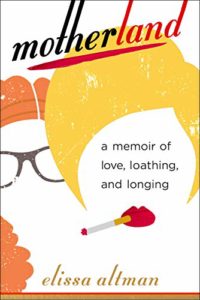Back in the 1990s, from 1991 through 2000, I lived alone in a small, dark-but-nice studio apartment in Manhattan; after the end of a tumultuous and trying relationship, I welcomed the silence and peace. Despite the size of the apartment (450 square feet, more or less) and the fact that I literally had no natural light–I had to lean out the window and then look directly up to tell if the sky was blue or not–my kitchen was workable. Small, but workable. And for the nine years I lived there, I cooked for myself, almost constantly.
I made a lot of good meals: lemon chicken from the
Union Square Cafe cookbook; tons of risotto; pan-seared shrimp from a local fish market that used to supply neighborhood restaurants. But I also made a lot of weird, eating-alone food: fried egg sandwiches on white bread with harissa; cottage cheese mixed with canned sardines and eaten off crackers (a dish taught to me by my father’s mother); leftover chicken-or-tuna-or-whatever, tossed with pasta and then baked to a faretheewell under a layer of Pecorino Romano. This was nothing I’d serve to other people, but I loved it because, well, it was
mine.
I used to feel marginally guilty eating like this, and the fact of it used to worry my mother so much (why did I often prefer to be alone? Was I a hermit?) that she thought she was remedying the problem by sending me hundreds of dollars worth of beef and veal from a very upscale meat market, pre-wrapped and ready for the freezer. Which is where they sat, for months on end. Maybe she assumed that the protein would fortify me in my search for a mate with whom to share my meals, but the fact is that she really wanted me out of the house, and she thought that frozen meat had a half-life. Eventually, it took on that grayish green sheen that happens after a few months in an arctic blast.
Anyway, Mine–the concept of Mine–was very big at that point in my life, mostly because I’d previously found myself in one of those insidious relationships where Mine had gotten lost. So it didn’t matter to me whether or not my food was weird. Because it was Mine. Still, there was something unsettling about it, and everyone I knew worried that I was going to become one of those New York types who wears black tent dresses and spends her life having conversations with her cats. Not to sound cruel, but you know what I mean.
Enter Laurie Colwin, who I have written about extensively over the years. Her food writing is stellar, human, warm, graceful, and often side-splittingly funny, and you probably know that already if you’re familiar with her books. But I realized that one of the reasons I loved her work, and her, so much, was that–living alone and aching from the end of a serious relationship–I could completely relate to her writing, especially when she wrote about the slightly subversive act of feeding yourself when no one is looking. Just read her essay from
Home Cooking, “
Alone in the Kitchen with an Eggplant“:
“Dinner alone is one of life’s pleasures. Certainly, cooking for oneself reveals man at his weirdest. People lie when you ask them what they eat when they are alone. A salad, they tell you. But when you persist, they confess to peanut butter and bacon sandwiches deep fried and eaten with hot sauce, or spaghetti with butter and grape jam.”
Indeed. Maybe it was Laurie’s overt honesty that has stuck with me through the years, or maybe it’s just the fact that, at one time or another, we’ve all eaten by ourselves, and the stuff we conjure up can run the gamut from tasty to vile. But then, as I’ve often said, One Man’s Meat is Another Man’s Dreck; what I find subversively wonderful you might hate. Take, for example, the mango and beef soup that Susan used to make when I first met her, that had to come from one too many evenings alone with a bare cupboard and the dregs of her freezer. Or the fact that when I’m in the city and Susan is home with the dog and the cats, and watching television with her feet up, she likely is not eating the salad that she tells me she’s eating. She’s eating chips and vegetable onion dip. If this isn’t Poor Man’s feasting, I’m not sure what is.
You could write an entire book about this subject; you could look it at from a quasi-psychological point of view, or a culinary point-of-view (and pack it with crazy-good recipes), or both. And if you just happen to be married to a remarkable illustrator with a penchant for creating wildly idiosyncratic, unique, and utterly human drawings, you could have the makings for a truly revelatory, magical work, indeed. That’s exactly what
Deborah Madison and her husband, painter
Patrick McFarlin have done, in
What We Eat When We Eat Alone. Yes, Deborah is the founding chef of the landmark San Francisco restaurant,
Greens, which catapulted vegetarian cooking out of bland 1970s
lentil nutloafdom and into other-wordly goodness; her books, especially her seminal
Vegetarian Cooking for Everyone, are the bedrocks of cookbook collections everywhere. But
What We Eat When We Eat Alone has put Deborah Madison in another category entirely: simply put, she and McFarlin, in these pages, take a very close look at human nature and how it manifests itself culinarily, when no one is watching. In doing this, they’ve picked up exactly where Laurie Colwin left off, in one of the greatest food essays ever written…and they do it by way of brilliant, warm writing, and truly smile-provoking, humanly sophisticated illustrations.
Image by Patrick McFarlin. All rights reserved.
Sure, the recipes are great, but they’re also very definitely personal: Fried potatoes with yogurt sauce; sauteed mushrooms for toast or polenta; chicken soup almost. My favorite, of course, is sardines on toast, but that’s purely because of grandma; I keep a hidden can of the skinless and boneless variety tucked in the back of my pantry for those rare times that Susan isn’t home. This, apparently, isn’t such odd behavior after all.
My bedside table is starting to get very crowded; Elizabeth David shares space with Charlotte Joko Beck, who shares space with Carlo Petrini, who shares space with Laurie Colwin, who sits, always, at the top of the pile.
Until now.





